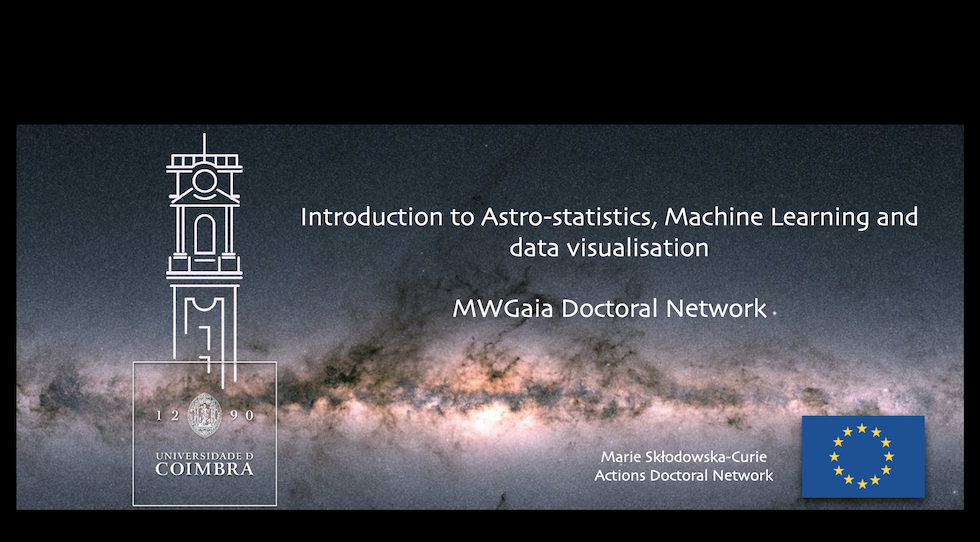Introduction to astrostatistics, Bayesian and time series analysis
Mario Juric (Univ. of Washington) and Xavier Luri |(Univ. of Barcelona)
Random numbers and common statistical distributions; methods for sampling from probability density functions, key principles like the Central Limit Theorem and Law of Large Numbers; statistical tests for hypothesis testing and Maximum Likelihood Estimation.
Introduction to Bayesian probability, process of creating models within a Bayesian framework, tools for efficient sampling in Bayesian statistics. Time series analyses, identification of patterns in bursts to periodic, and quasi-periodic signals.
Supervised and unsupervised learning techniques, methods for model interpretation, and a glimpse into the future of ML/AI
Emily Lauren Hunt (Univ. of Heidelberg), Friedrich Anders (Univ. of Barcelona)
Supervised learning techniques: classification and regression, with a focus on neural networks and tree-based algorithms. Work examples include source classification, determining stellar parameters from spectra, and estimating photometric redshifts.
Unsupervised learning techniques: clustering algorithms, dimensionality reduction methods (e.g. PCA, t-SNE, UMAP, self-organizing maps), edge detection algorithms.
Interpreting machine learning models using SHAP (SHapley Additive exPlanations). Symbolic regression for interpretability. Including uncertainties in ML models. The future of ML/AI, including the potential of transformers.
Tools for large-scale data analysis and visualization
André Moitinho (Univ. of Lisbon), Mario Juric (Univ. of Washington), Sandro Campos (Carnegie Mellon Univ.)
Introduction to tools and techniques for large-scale data analysis. Techniques for working on large computing clusters with multi-TB-scale catalog datasets, focusing on tools like LSDB/HiPSCat. Work examples include classification of timeseries using Gaia and ZTF datasets.
Introduction to visualization, as a mean of analysis. Challenges for visualizing large datasets, and available frameworks/services. Effective techniques for representing large datasets. Techniques for visualizing multi-dimensional data (1D, 2D, 3D and beyond), linked views and lower dimension projections.
